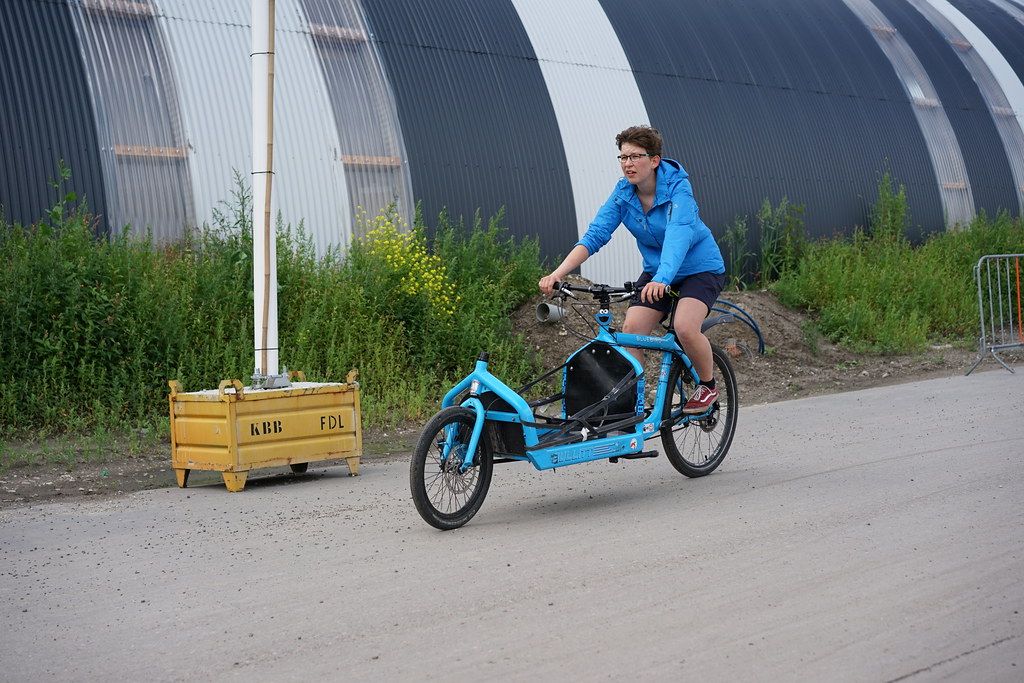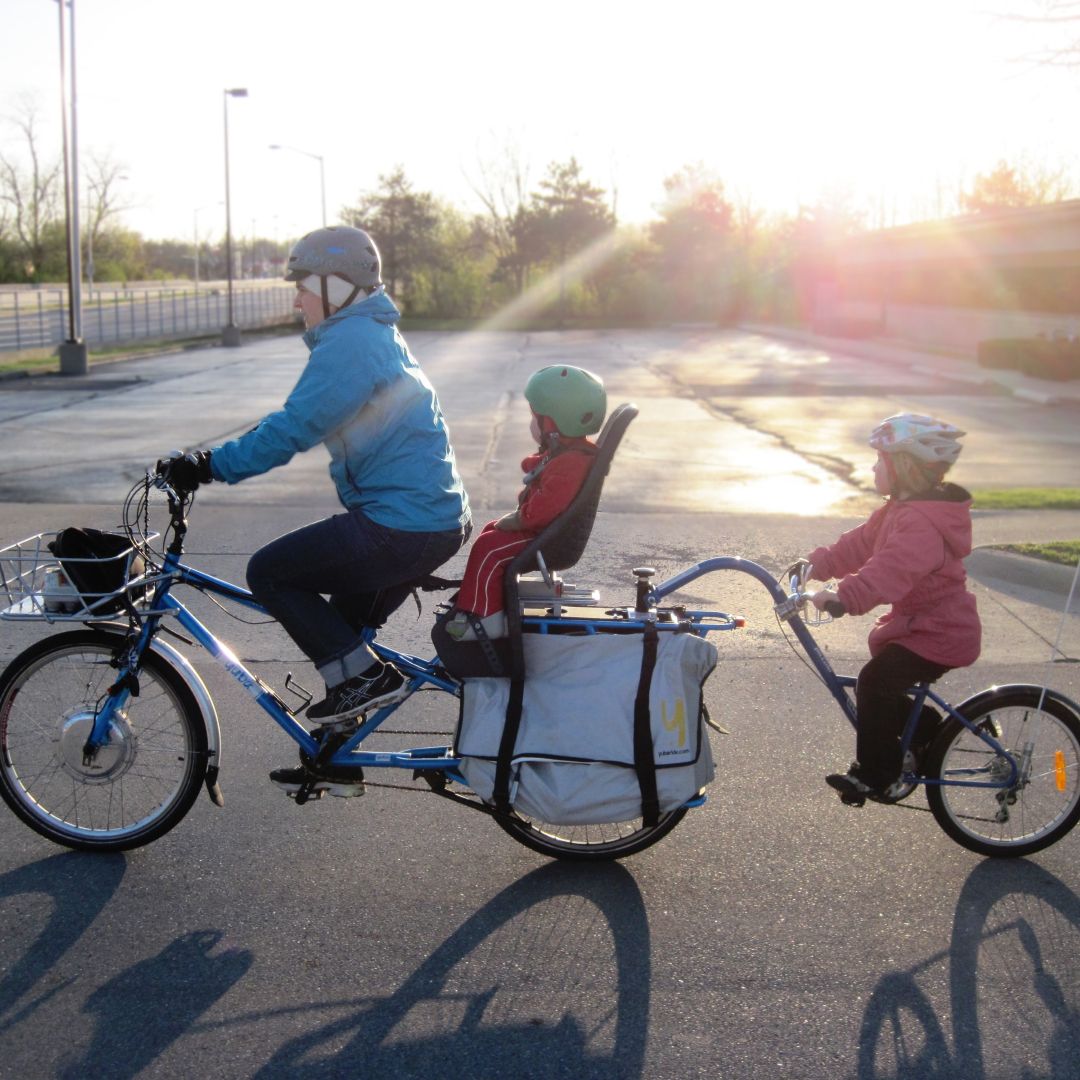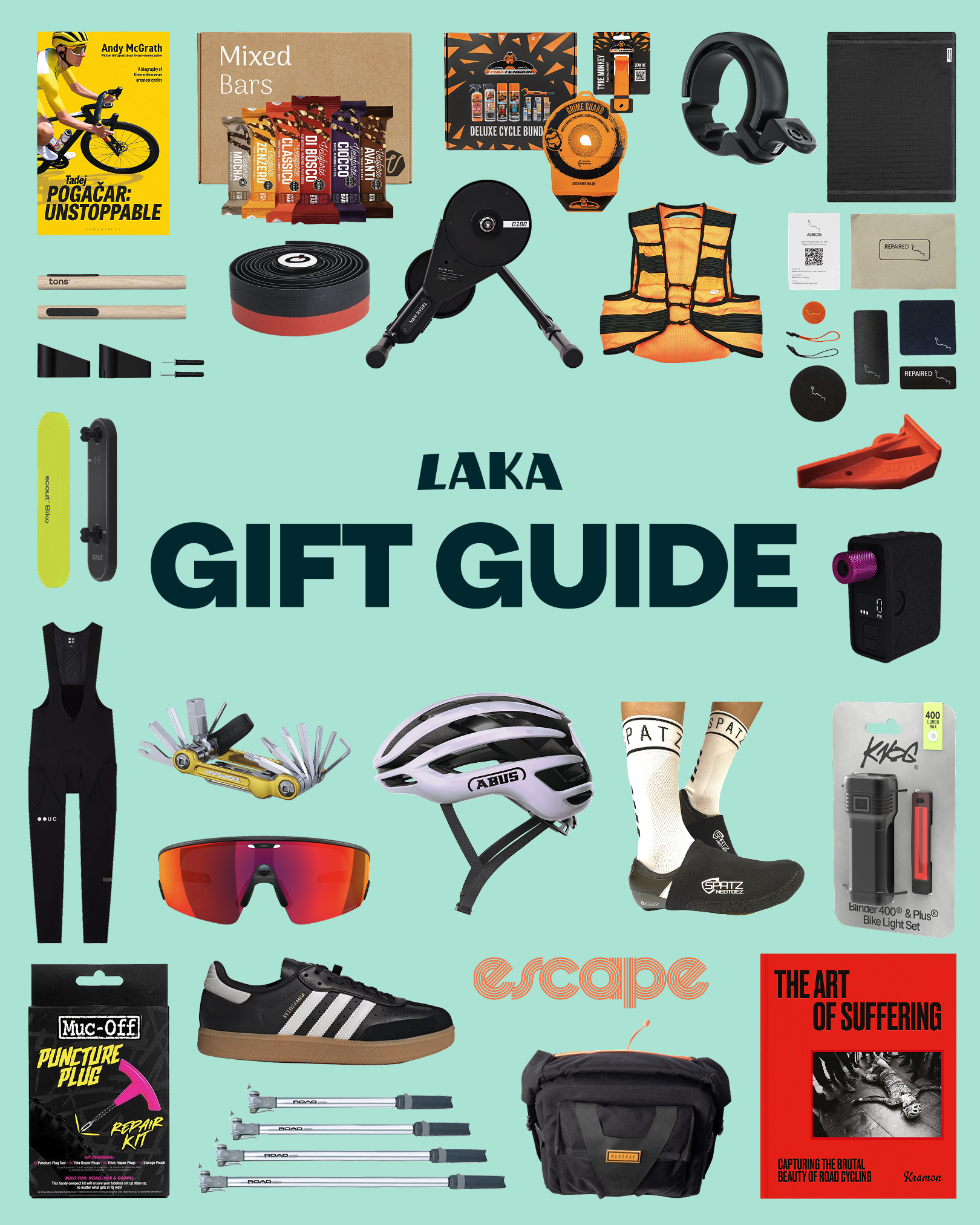Affectionally referred to by their owner as 'box bike', 'big bike', or occasionally, 'chariot', cargo bikes are officially known as non-standard cycles. Their practicality and the sheer fun riding them have made them increasingly popular with families and businesses alike. Cargo bikes have strengthened their position as a solution in an urban world of ever-increasing congestion, finer pollution, and post COVID-19, where physical proximity with other people has become a health hazard.
I bought my cargo bike almost 10 years ago and I have used it almost every day since. This was one of the best decisions I’ve ever made. It's our only family vehicle which, over the years, ensured a smooth and reliable school run, efficient grocery runs, work commutes and one house move. Whilst, at the same time, giving my children amazing memories they will cherish for the rest of their lives.

Cargo bikes come in various shapes and sizes but roughly fall into three main categories: the self-explanatory box bikes, with two or three wheels; longtails - which are like standard bicycles but with an extended rear rack and Long Johns – mostly for freight - with an extended front and a front-wheel further away from the fork. Cargo bikes have existed for over a century, commonly used for food and good deliveries, thanks to the extra load capacity. You now have models specifically designed to transport passengers in a wheelchair, children (up to 6), freight, and dogs.
Nowadays, cargo bike families are driving the resurgence of those highly practical family vehicles and more bike shops are stocking them. With an ever-widening range of models, where to start when choosing the one for you?
1 – Try before you buy
The size and shape of cargo bikes mean the handling is quite different from a standard bicycle. Level of comfort over handling is highly personal and depends on individual preference, so it’s highly advisable to do a test ride, which most retailers offer. Some will even let you rent it out so you can try it on your intended route and within the context of your intended use. This will help with narrowing it down to a couple of models.
Cargo bikes are a one-off hefty purchase, however when you compare this cost, including running costs, with a motor vehicle – fair as they do the same job - it’s a smart financial decision. Check with your employer if you can buy it through a cycle-to-work scheme.

2 – Routes and passengers
Considerations such as where to keep it overnight, who is going to ride it the most, for what purpose, and what type of routes will you use it on, should also guide your decision. Look up the specs carefully to check the width against the dimensions of any gates or fences. If you are considering a cargo bike for daily use, it needs to be convenient and easy to get it out and back in. Many families have no other choice but to park it outside their home, so think about how you will secure it. Check the minimum requirements expected by your insurer and make sure it won’t cause any obstruction on the pavement. Laka has a cargo bike-specific product that has been carefully designed to meet cargo bike users' needs.
Think of who else is going to ride it regularly, can you extend the handlebar? How easy is it to adjust the saddle? How many children? Think of the space you will need as your family grows and this includes children you already have but also those who may come later. All cargo bikes have benches and age-adapted seatbelts with the option to fix a car or a toddler seat, for the youngest passengers. As the payload usually goes up to 100kgs, even one adult can hitch a ride without the need to pedal!
Now, thinking of the route you are likely to take. Is it hilly? Trafficky? Do you have many traffic lights on the way? Do you have barriers, like chicanes on the route, or narrow paths? Cargo bikes have different weights, turning ranges, and some are easier to manoeuvre than others. Lifting and manoeuvring is also good to practice during a test ride to get a feel before buying.
The choice between two wheels or three wheels will also likely depend on the considerations mentioned above. They both have their pros and cons. Two wheels are more agile, more stable when riding and filtering is easier. If you are already cycling a standard bicycle, the handling will undoubtedly feel familiar. Cargo trikes offer more space, you won't need to put your foot down to balance when stopping in traffic and restarting, especially from the bottom of a hill. The handling may feel a bit unusual at the beginning, cornering for instance can feel a bit wild at first, but it is easy enough to pick up quickly. Some cargo trikes turn with the box, others, just the front wheels.

3 – What about the weather?
Most cargo bike models come with a removable waterproof hood to keep your little one(s) cosy, warm, and dry. In countries like Denmark or Holland, cargo bikes are the most popular mode of transport for families with young children and it can get windy and cold out there. In summer, you also have sun shields available on certain models. Most hoods will be versatile enough to let you open or close the windows to make it exactly right all year-round. Cargo bike children often treat under the hood as an extension of their play space. It becomes a singing hall, a table to play games, they hide under a blanket, read a book under a camping light, and at times, a kitchen where to find the all-important snack box!
4 – Electrics or not?
Choosing an electric model will add to the purchase cost but it is worth considering if you have hills and heavier loads (or more than one child). You are also more likely to keep using it for longer, on greater distances and more regularly. And, let's face it, we all have days when our body just says, don’t feel like it today. Since the school run, however, isn’t optional, it’s nice to have the option. Most brands will have an electric version for each model, so it's worth trying both. You can always retrofit at a later stage, but it usually costs more to do that rather than buying an electric model from the word go. If you buy an electric cargo bike, make sure you do so from a reputable brand and know a local bike shop staffed with mechanics, who know their way around that system for specific repairs and regular maintenance.
If you buy your cargo bike from a well-known brand, it will retain its value well so you could always use a non-electric model for a few years, and fund an electric model upgrade, by selling the first one.
5 – Are you ready for your cargo bike adventures?
Did I mention how fun cargo bikes are to ride? Beyond the well-known environmental, physical and mental health benefits of cycling, there is definitively something extra special about cycling others around. When trips like the grocery run come with anticipation and excitement, that’s when you know you are onto something! The quality time you spend on the saddle, interacting with your passengers and with people around you, is just wonderful. You better start practising your 'cargo bike nod and wave' to be fully prepared when admirative looks and comments from random people come your way!
SPECIALIST CARGO BIKE INSURANCE BY LAKA
All cargo-bikes are covered against theft, damage and much more. With flexible monthly policies you can cancel anytime.
Why not give us a try?






